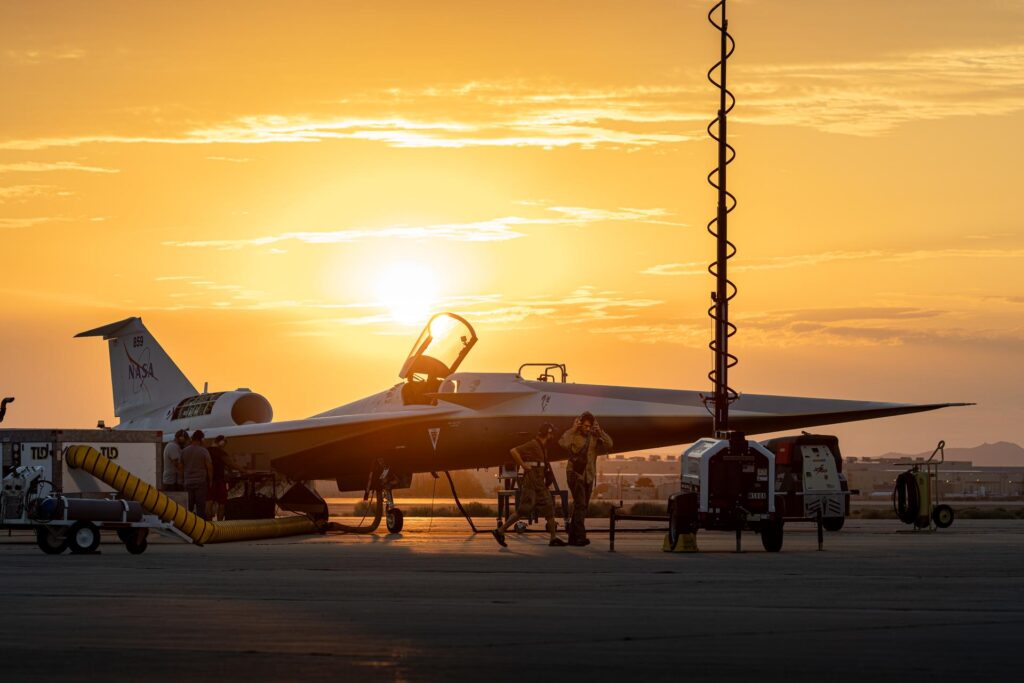
NASA’s X-59 quiet supersonic research aircraft is on the verge of its inaugural flight, following successful completion of essential ground tests at Lockheed Martin’s Skunk Works facility in Palmdale, California. The aircraft, which is central to NASA’s Quesst mission, aims to demonstrate a significant reduction in the disruptive sonic boom associated with supersonic flight, replacing it with a quieter “thump.”
The X-59 is scheduled to take to the skies later this year, with final preparations underway. In July 2025, the team conducted low-speed taxi tests, setting the stage for upcoming medium- and high-speed tests. These assessments will focus on the aircraft’s handling capabilities at increased ground speeds, including critical functions such as braking, steering, and overall stability. The unique design of the X-59, which lacks a forward-facing cockpit window, necessitates thorough evaluation of its visibility systems.
Flight Testing and Objectives
The initial flight of the X-59 will commence a crucial phase of flight testing that aims to verify the aircraft’s airworthiness and safety. Expected to reach speeds of approximately 240 mph at an altitude of about 12,000 feet, the flight is planned to last roughly one hour, departing from Palmdale and landing at NASA’s Armstrong Flight Research Center in Edwards, California.
During this maiden flight, the team will focus on several vital systems, including engine performance, stabilization, instrumentation, autopilot functionality, control systems, and air data performance. These evaluations are essential as they prepare the aircraft for subsequent flight tests, which will explore higher speeds and altitudes to further assess performance and safety.
The flight data collected during this phase will be instrumental in supporting the Quesst mission objectives. By demonstrating the X-59’s capabilities, NASA aims to provide valuable insights for U.S. and international regulators as they contemplate new noise standards for supersonic commercial flight over land.
Significance of the Mission
The X-59 represents a significant advancement in aviation technology, potentially transforming air travel by reducing the environmental impact of noise pollution. The Quesst mission not only seeks to redefine the parameters of supersonic flight but also aims to pave the way for a new era of commercial aviation that prioritizes both speed and sustainability.
As preparations continue, NASA test pilot Nils Larson has been actively involved in ground tests, ensuring that the X-59 is equipped for its upcoming challenges. The successful completion of the X-59’s first flight will mark a pivotal moment in aerospace research, aligning with the ongoing efforts to honor the legacy of aviation pioneers while charting a course for the future of flight.
With the final ground tests nearing completion and the first flight on the horizon, the aviation community eagerly anticipates the impact of the X-59 on the future of supersonic flight.






